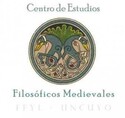The Formal sign and objectuality. Examination of the doctrine of John Poinsot
DOI:
https://doi.org/10.48162/rev.35.004Keywords:
Poinsot, formal sign, Thomas Aquinas, representationAbstract
This article aims to analyze the Poinsot´s doctrine about the formal sign of which the concept is the case par excellence. We seek to answer the question if the formal sign theory is a correct interpretation of Thomas Aquinas. The representative nature of this sign raises issues that we seek to solve.
References
“Corpus Thomisticum”. S. Thomae De Aquino., Opera Omnia, acceso el 8 de Julio del 2020, https://www.corpusthomisticum.org/iopera.html
Anchepe, Ignacio. “Ni lo mismo ni lo otro. Sobre conocimiento y semejanza en la noética de Tomás de Aquino”. Scripta Mediaevalia. Revista de pensamiento medieval, 7 (2014): 115-138.
Beuchot, Mauricio. “La doctrina tomista clásica sobre el signo: Domingo de Soto, Francisco de Araújo y Juan de Santo Tomás”. Crítica: Revista Hispanoamericana de Filosofía, 12, n.° 36 (1980): 39-60.
Beuchot, Mauricio. Juan de Santo Tomás. De los signos y los conceptos. México: UNAM, 1989.
Cruz, Juan. Juan de Santo Tomás. El signo. Cuestiones I/5, XXI, XXII y XXIII del Ars Logica. Pamplona: Eunsa, 2000.
Dewan, Lawrence. “St Thomas and the Integration of Knowledge into Being”. International Quarterly, 24 (1984): 383-393.
Furton, Edward. “The Constitution of the Object in Immanuel Kant and John Poinsot”. The Review of Metaphysics, 51, n.° 1 (1997): 55-75.
Inciarte, Fernando. Tiempo, sustancia y lenguaje. Pamplona: Eunsa, 2004.
Llano, Alejandro. El enigma de la representación. Madrid: Síntesis, 1999.
Llano, Alejandro. Metafísica y lenguaje. Pamplona: Eunsa, 1984.
Llano, Alejandro. Segunda Navegación. Madrid: Encuentro, 2010.
Llano, Alejandro. Teoría del conocimiento. Madrid: BAC, 2015.
Lombardi, Pietri. Sententiate in IV Libris Distinctae. Roma: Collegii S. Bonaventurae ad Claras Aquas, 1981.
Maritain, Jacques. Los grados del saber. Buenos Aires: Club de lectores, 1968.
Moya, Patricia. “Intencionalidad y representación”. Cuadernos de Teología, 9, n.° 2 (2017): 184-201.
Murphy, James. “Language, Communication, and Representation in the Semiotic of John Poinsot”. The Tomist, 58, n.°4 (1994): 569-598.
O’Callaghan, John. Thomist realism and the linguistic turn: Toward a more perfect form of existence. Notre Dame: University of Notre Dame Press, 2003.
Osborne, Thomas. “The Concept as a Formal Sign”. Semiotica 179 (2010): 1-21.
Poinsot, John. Ars Logica (edición B. Reiser), Cursus Philosophicus Thomisticus. Turin: Marietti, 1930.
Polo, Leonardo. Curso de teoría del conocimiento. Pamplona: Eunsa, 1987.
Posada, Mario. La intencionalidad del inteligir como iluminación. Pamplona: Servicio de Publicaciones de la U. de Navarra, 2007.
San Agustín. De doctrina cristiana. Corpus Christianorum Series Latina 32. (Brepols: Turnhout, 1962)
Sokolowski, Robert. Fenomenología de la persona humana. Salamanca: Sígueme, 2013.
Downloads
Published
How to Cite
Issue
Section
License

This work is licensed under a Creative Commons Attribution-NonCommercial-ShareAlike 3.0 Unported License.






































